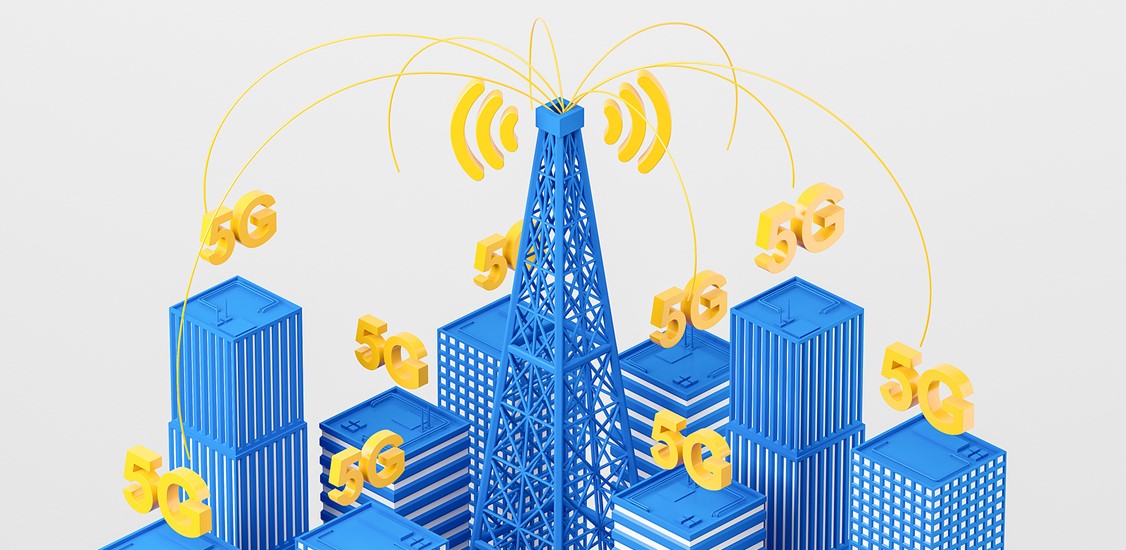When it comes to usage of data, we all seem to never get enough. Analysys Mason predicts that the comfort speed in the home will be 1 gigabit by 2025. We are now just 3 years away from this. There are massive investments on the way across the US through Rural Digital Opportunity Fund (RDOF), Biden infrastructure bill, we are also beginning to see this in Europe with for example Italy establishing a €3.7B gigabit broadband fund in early 2022. There are more or less two main ways of reaching this speed using Fiber to the Home (FTTH) or 5G Fixed Wireless Access (FWA) using mmWave frequencies. Where unlicensed 5G has a great advantage due to the massive available bandwidth of 14 GHz total in 6 channels (2 GHz each) for true gigabit connectivity as well as being unlicensed for all to use.
There will be a large mix of networks providing broadband depending on where your home is located everting from FTTH, FWA, SATCOM, Cable etc. SATCOM for example will grow strongly in the coming years, however there is a limitation to the capacity since the number of satellites will be limited even if they are in the thousands and as soon as millions of users are connected and share the capacity it will impact overall performance. Which has been seen lately with for example STARLINK moving from Beta test to more users. The best kind of solution will be a mix of fiber, FTTH and FWA. You will need a lot of backhaul with Fiber even for quite small unlicensed 5G 60 GHz mesh networks. For example, in India BharatNet have connected 625.000 villages with Fiber which is the fundamental building block to offer the backhaul need. Then it is more a business case decision if you can build FTTH or want to reduce cost using FWA. For example, Adtran that mostly has been offering Fiber recently started to offer FWA using unlicensed 5G 60 GHz mesh networks in their Fiber extension portfolio (https://www.adtran.com/index.php/mesh-fixed-wireless). We believe this mix is a perfect way of addressing the future need for gigabit broadband.
Why is unlicensed mmWave 5G FWA such an important enabler for future of connectivity? If we look back FWA has been available for quite some time and has been used in many places. But it has never been able to offer the best kind of connectivity. Why? If we look back 4G, it can best offer 50-60 MHz channels, with this new 5G technology we can get 2000 MHz (2 GHz), which is 40x more capacity. The speed you can get on a link is direct proportional to the available bandwidth, hence now when technology has been able to be miniaturized and unlicensed 5G frequencies are available and approved for use in many countries around the world this will change the future of connectivity on large scale. Also, with miniaturized technology at a lower cost it starts making sense building dedicated mesh FWA networks for residential areas rather than digging fiber which is booth time consuming and much more costly.
Cost considerations
5G mmWave is a suitable solution for providing wireless gigabit speed broadband connectivity to homes and small and medium businesses, either as a complementary service or a competitive and cost-effective alternative last-mile connection to fiber.
The operator Three and global analyst company CCS Insight have calculated that FWA could be installed for half the cost of full-fiber and still provide a comparable level of connectivity and are
calling on the UK government to reconsider its reliance on fiber technology when executing its Gigabit 2025 plan. We see a similar trend in other markets, where the US is currently the biggest market when it comes to FWA.
According to “The Economics of mmWave 5G” report by GSMA Intelligence, “Operators that underestimate the role of mmWave in the short term run the risk of finding themselves at a disadvantage to competitors when offering 5G services.” The report gives an in-depth analysis around the economics of using mmWave in a 5G network, compared to using Sub-6 GHz technology only. For the specific case of FWA, GSMA’s conclusion is that the cost saving could be between 15% and 27% when applying mmWave as a complement to Sub-6 GHz on a network level, and as high as 35% when addressing high data demand with mmWave FWA only.
To summarize, the business case for operators and service providers can be improved significantly by considering the following aspects:
- When addressing high data demand from users by deploying broadband access, the wireless alternative to fiber can significantly improve profitability and competitiveness
- When deploying FWA, it will be more efficient to combine Sub-6 GHz and mmWave, than to deploy Sub-6 GHz only
- Both licensed and unlicensed 5G mmWave options are available and mature for commercial deployment
- Secure that the technical solution can reach and connect as many FWA customers as possible with a minimum of hardware and infrastructure installations
Conclusions
Unlicensed mmWave 5G is a very suitable solution for providing wireless gigabit speed broadband connectivity to homes and small and medium businesses, either standalone service or a competitive and cost-effective last-mile connection together with fiber. We are just seeing the rollout starting in the US and EU and I believe that this is just the start om how we all will be using gigabit connectivity in the home form now to 2030 when maybe 6G will start replacing these kinds of services.






















